San Francisco Zen Center on:
[Wikipedia]
[Google]
[Amazon]
San Francisco Zen Center (SFZC), is a network of affiliated Sōtō Zen practice and retreat centers in the San Francisco Bay area, comprising City Center or Beginner's Mind Temple, Tassajara Zen Mountain Center, and Green Gulch Farm Zen Center. The sangha was incorporated by Shunryu Suzuki Roshi and a group of his
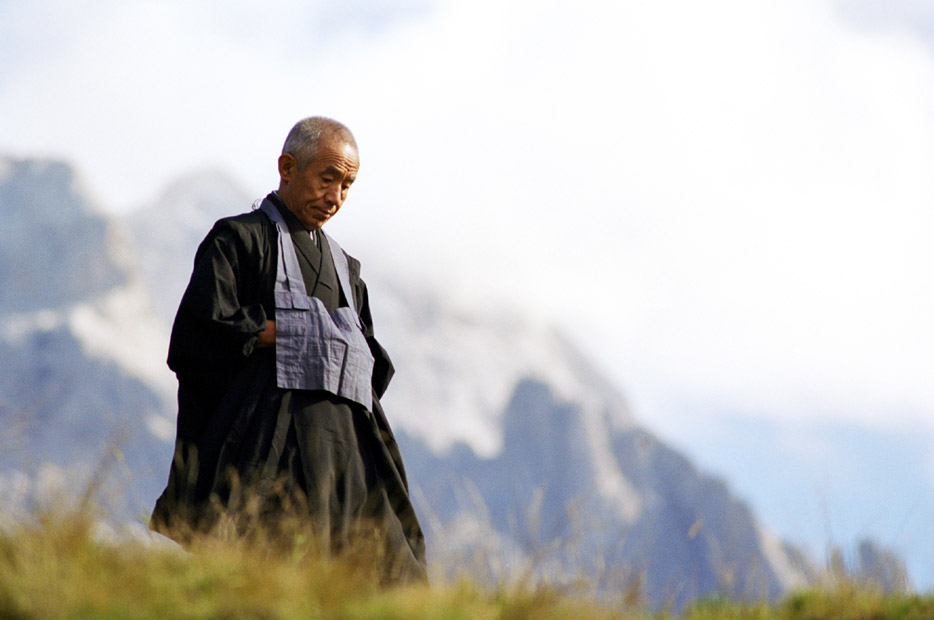 Another assistant priest at SFZC was Dainin Katagiri-roshi, who served there from 1969 to 1971. Katagiri would go on to establish his own practice center—the Minnesota Zen Center—in 1972 in
Another assistant priest at SFZC was Dainin Katagiri-roshi, who served there from 1969 to 1971. Katagiri would go on to establish his own practice center—the Minnesota Zen Center—in 1972 in 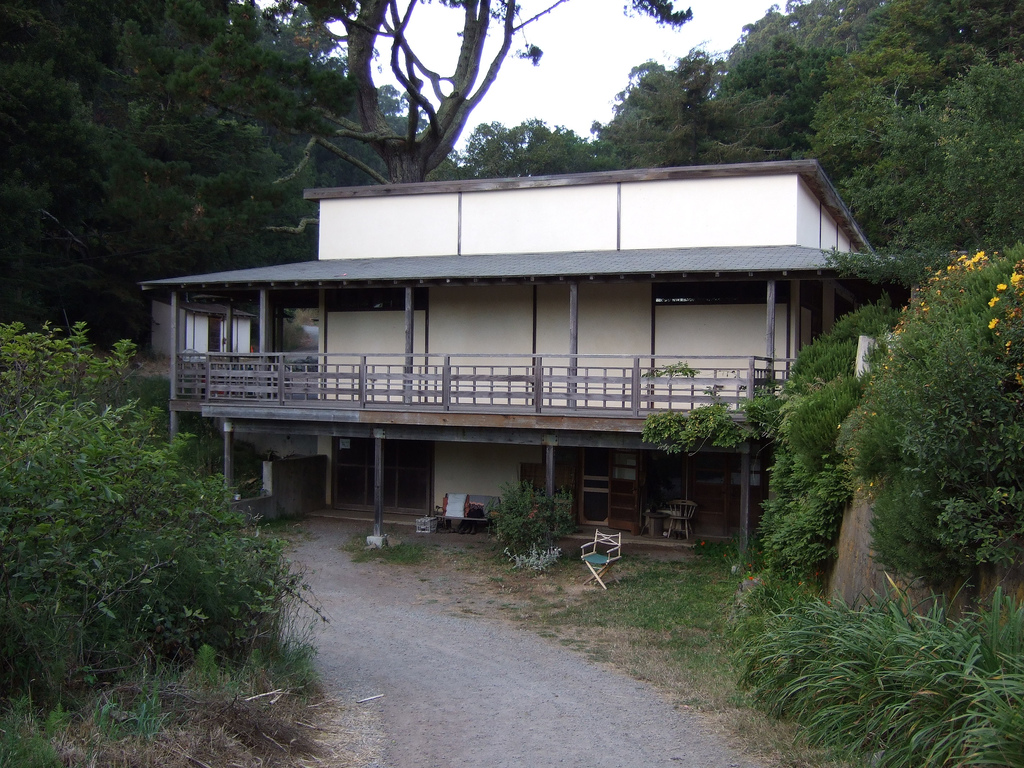 In 1969, Sokoji's board of directors asked Suzuki to resign his position as the temple's priest, asserting that he was spending more time with his Western students than the Japanese-American congregation. Months later Suzuki—with the help of his
In 1969, Sokoji's board of directors asked Suzuki to resign his position as the temple's priest, asserting that he was spending more time with his Western students than the Japanese-American congregation. Months later Suzuki—with the help of his  Suzuki had asked Baker to locate a
Suzuki had asked Baker to locate a 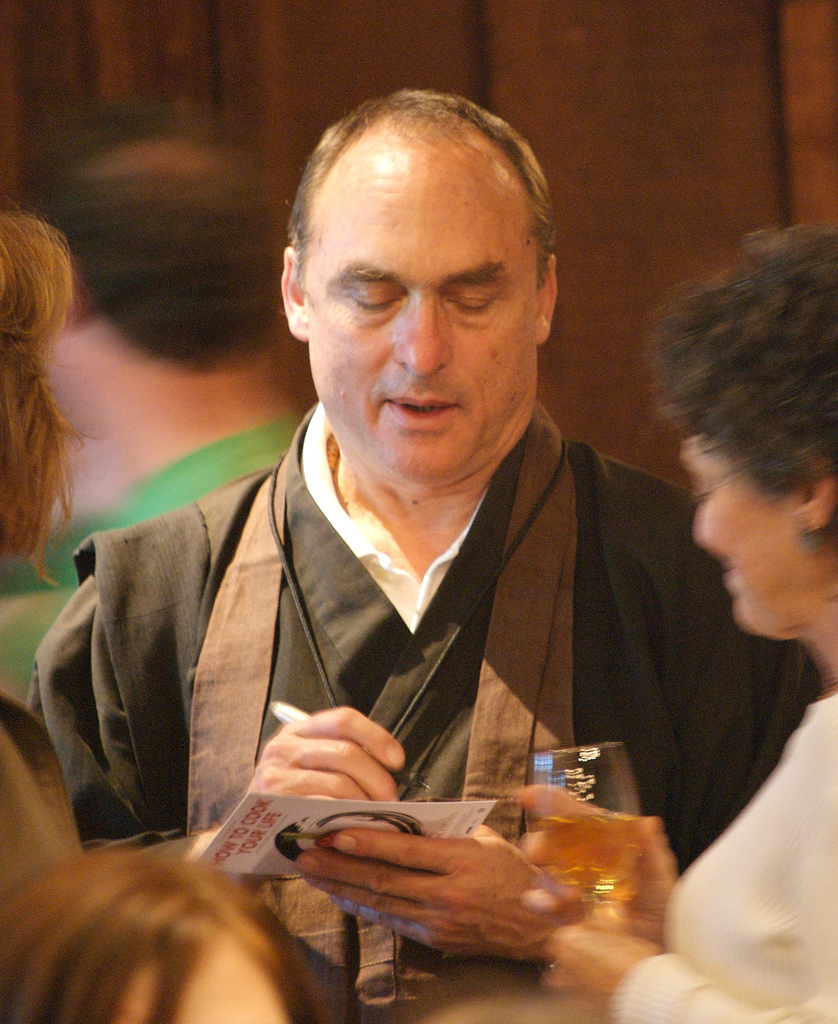 In 1976, SFZC purchased the Gallo Pastry Company to found the Tassajara Bakery, which became popular before being sold to the company Just Desserts in 1992. The bakery was closed altogether in 1999. Tassajara Bakery was a Zen Center venture promoted by Richard Baker as an extension of the baking practices at Tassajara Zen Mountain Center. Tassajara baked bread for student and guest consumption since 1967, and Edward Espe Brown's ''Tassajara Bread Book'', demonstrated consumer interest. The bakery supplied
In 1976, SFZC purchased the Gallo Pastry Company to found the Tassajara Bakery, which became popular before being sold to the company Just Desserts in 1992. The bakery was closed altogether in 1999. Tassajara Bakery was a Zen Center venture promoted by Richard Baker as an extension of the baking practices at Tassajara Zen Mountain Center. Tassajara baked bread for student and guest consumption since 1967, and Edward Espe Brown's ''Tassajara Bread Book'', demonstrated consumer interest. The bakery supplied
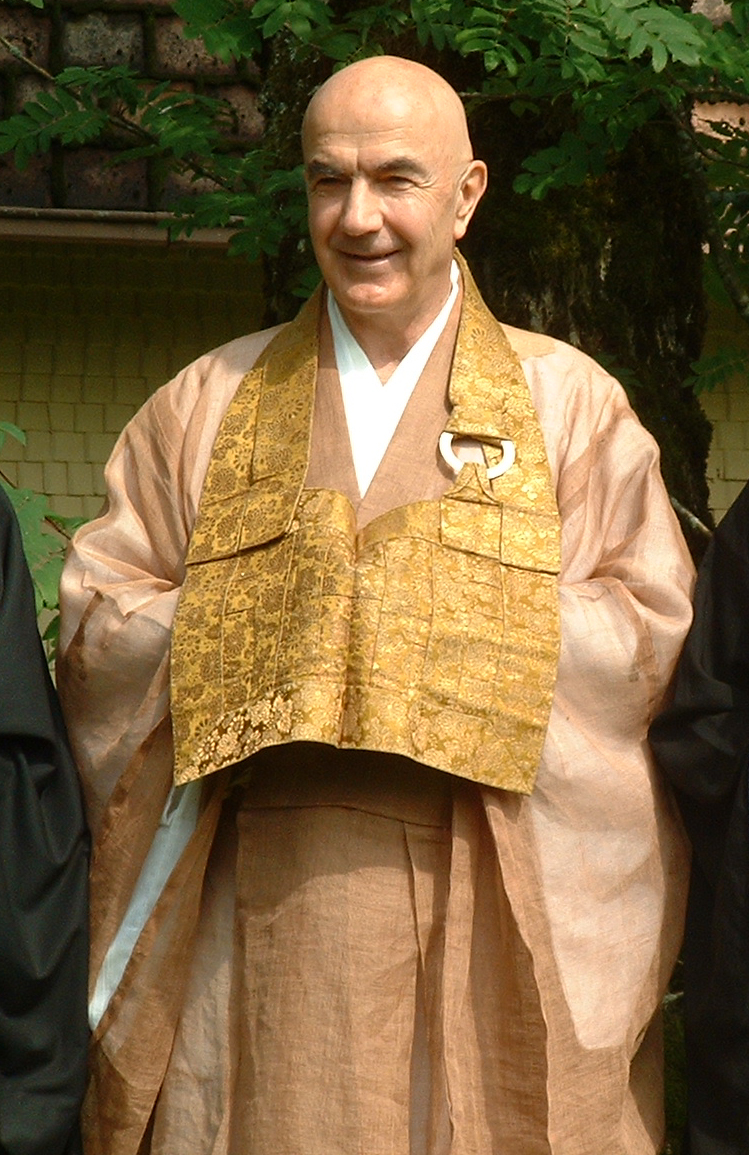 In March 1983 Baker was accused of engaging in a sexual relationship with the wife of an influential sangha member. Although Baker claimed that his relationship was a love-affair which had not yet been consummated, the outcry surrounding the incident led to accusations of impropriety, including the admissions by several female members of the community that they had had affairs with Baker before or during his tenure as abbot.Schneider, David. ''Street Zen'' pp.138-140 The community's sense of crisis sharpened when the woman's husband, one of SFZC's primary benefactors, threatened to hold the organization legally responsible for its abbot's apparent misconduct.Crews, Frederick C. ''Follies of the Wise'' pp. 283-284
These revelations led Baker to resign as abbot in 1984. San Francisco Zen Center's web site now comments: "Although the circumstances leading to his resignation as abbot in 1984 were difficult and complex, in recent years, there has been increased contact; a renewal of friendship and dharma relations."
In the 1980s Baker ordained
In March 1983 Baker was accused of engaging in a sexual relationship with the wife of an influential sangha member. Although Baker claimed that his relationship was a love-affair which had not yet been consummated, the outcry surrounding the incident led to accusations of impropriety, including the admissions by several female members of the community that they had had affairs with Baker before or during his tenure as abbot.Schneider, David. ''Street Zen'' pp.138-140 The community's sense of crisis sharpened when the woman's husband, one of SFZC's primary benefactors, threatened to hold the organization legally responsible for its abbot's apparent misconduct.Crews, Frederick C. ''Follies of the Wise'' pp. 283-284
These revelations led Baker to resign as abbot in 1984. San Francisco Zen Center's web site now comments: "Although the circumstances leading to his resignation as abbot in 1984 were difficult and complex, in recent years, there has been increased contact; a renewal of friendship and dharma relations."
In the 1980s Baker ordained 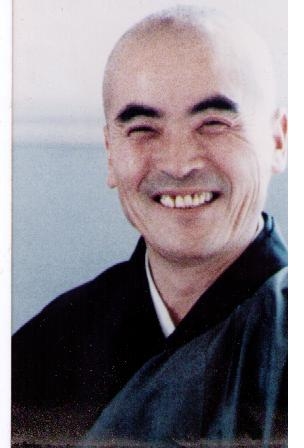 Following Baker's resignation, Dainin Katagiri led the community until 1985. When Katagiri left,
Following Baker's resignation, Dainin Katagiri led the community until 1985. When Katagiri left,
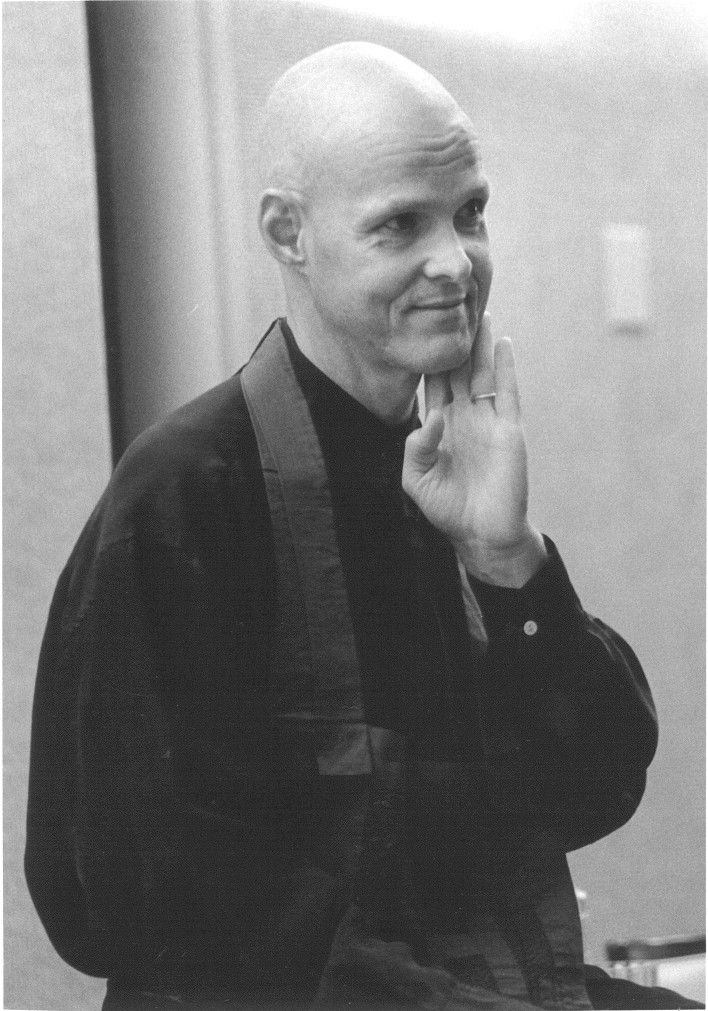 In 1983
In 1983
Zen Hospice Project
{{Coord, 37.774009, -122.426075, type:landmark, display=title Buddhist temples in San Francisco Buddhist monasteries in the United States Buddhist organizations based in the United States Religious organizations established in 1962 History of San Francisco Soto Zen Spiritual retreats
American
American(s) may refer to:
* American, something of, from, or related to the United States of America, commonly known as the "United States" or "America"
** Americans, citizens and nationals of the United States of America
** American ancestry, pe ...
students in 1962. Today SFZC is the largest Sōtō organization in the West.
History
On May 23, 1959, Shunryu Suzuki (then age 55) came fromJapan
Japan ( ja, 日本, or , and formally , ''Nihonkoku'') is an island country in East Asia. It is situated in the northwest Pacific Ocean, and is bordered on the west by the Sea of Japan, while extending from the Sea of Okhotsk in the n ...
to San Francisco
San Francisco (; Spanish for " Saint Francis"), officially the City and County of San Francisco, is the commercial, financial, and cultural center of Northern California. The city proper is the fourth most populous in California and 17t ...
to serve as head priest of Sokoji—a Soto Zen temple then located at 1881 Bush Street in Japantown. He was joined by his wife Mitsu (also from Japan) in 1961. Sokoji—founded by Hosen Isobe in 1934—had been housed in a former Jewish
Jews ( he, יְהוּדִים, , ) or Jewish people are an ethnoreligious group and nation originating from the Israelites Israelite origins and kingdom: "The first act in the long drama of Jewish history is the age of the Israelites""The ...
synagogue that is now Kokoro Assisted Living. Upon Suzuki's arrival at Sokoji, the congregation was composed entirely of members of the Japanese-American population. Unlike his predecessors, Suzuki was a fluent speaker of English
English usually refers to:
* English language
* English people
English may also refer to:
Peoples, culture, and language
* ''English'', an adjective for something of, from, or related to England
** English national ...
who actually wanted to come to the United States. Suzuki's arrival came at the tail end of the Beat movement and just prior to the social movements of the 1960s, both of which had major roots in San Francisco. Before long, Sokoji had non-Japanese Americans — mostly beatniks
Beatniks were members of a social movement in the 1950s that subscribed to an anti-materialistic lifestyle.
History
In 1948, Jack Kerouac introduced the phrase "Beat Generation", generalizing from his social circle to characterize the undergr ...
— coming to the temple to sit zazen
''Zazen'' (literally " seated meditation"; ja, 座禅; , pronounced ) is a meditative discipline that is typically the primary practice of the Zen Buddhist tradition.
However, the term is a general one not unique to Zen, and thus technical ...
with him in the morning. Soon these Westerners participated in regular services, and new non-Asian students came to outnumber the Japanese-American congregation. This change in demography caused a rift in the Sokoji community. The tension was alleviated when Suzuki's Western students began gathering for separate services, albeit still at Sokoji, in 1961. Some of these students began calling their group City Center, and they incorporated in 1962 as the San Francisco Zen Center.Ford, 121-137, 725-726Japantown Task Force, 100Clarke, 44-46Leighton, 208Prebish, 14-15
The number of practitioners at SFZC grew rapidly in the mid-sixties. Within a couple of years, Suzuki considered founding a monastery to host more intensive practice for those students who were interested. In 1966, Suzuki and Baker scouted Tassajara Hot Springs, located in Los Padres National Forest behind Big Sur
Big Sur () is a rugged and mountainous section of the Central Coast of California between Carmel and San Simeon, where the Santa Lucia Mountains rise abruptly from the Pacific Ocean. It is frequently praised for its dramatic scenery. Big Sur ...
, as a possible location for the envisioned monastic center. After a major fundraising effort led by Baker, Zen Center purchased the land—which contained a rundown resort and mineral springs in 1967. Tassajara Zen Mountain Center ("Zen Mind Temple" or ''Zenshinji'') was the first Zen Buddhist monastery built in the United States, and the first in the world to allow co-ed practice.
1967 also saw the arrival of Kobun Chino Otogawa of Eiheiji, who served as assistant to Suzuki. Kobun was resident teacher at the Tassajara Zen Mountain Center until 1970. Around 1970, he began sitting regularly with a group in Santa Cruz that went on to form the Santa Cruz Zen Center. In 1971, he became resident priest at Haiku Zen Center, a practice center in Los Altos where Suzuki-roshi had been giving lectures, and soon after the sangha there grew and changed its name to Bodhi. He served as Abbot there until 1978, moving the group to Jikoji in Los Gatos, California in 1979.
 Another assistant priest at SFZC was Dainin Katagiri-roshi, who served there from 1969 to 1971. Katagiri would go on to establish his own practice center—the Minnesota Zen Center—in 1972 in
Another assistant priest at SFZC was Dainin Katagiri-roshi, who served there from 1969 to 1971. Katagiri would go on to establish his own practice center—the Minnesota Zen Center—in 1972 in Minneapolis
Minneapolis () is the largest city in Minnesota, United States, and the county seat of Hennepin County. The city is abundant in water, with thirteen lakes, wetlands, the Mississippi River, creeks and waterfalls. Minneapolis has its origin ...
.
 In 1969, Sokoji's board of directors asked Suzuki to resign his position as the temple's priest, asserting that he was spending more time with his Western students than the Japanese-American congregation. Months later Suzuki—with the help of his
In 1969, Sokoji's board of directors asked Suzuki to resign his position as the temple's priest, asserting that he was spending more time with his Western students than the Japanese-American congregation. Months later Suzuki—with the help of his American
American(s) may refer to:
* American, something of, from, or related to the United States of America, commonly known as the "United States" or "America"
** Americans, citizens and nationals of the United States of America
** American ancestry, pe ...
students—purchased the current (and larger) City Center building, located on 300 Page Street.Johnson, 53-55 The building, designed by Julia Morgan, was built as the Emanu-el Residence Club in 1922 for the Emanu-el Sisterhood. The Residence combined residential rooms that could house 70 women on the upper floors, with public spaces for spiritual, recreational, and educational uses on the ground floor and basement. This relationship between the public and private was easily translated to the needs of the San Francisco Zen Center, with meditation halls and public spaces on the lower levels, and residential areas for practicing students on the upper floors.
In 1970, Suzuki gave Dharma transmission to Richard Baker, his only American Dharma Heir and chosen successor at SFZC. Suzuki planned to give transmission to Bill Kwong but died before his completion. Kwong's transmission was later completed by Suzuki's son, Hoitsu.Suzuki, 9
Suzuki died of cancer
Cancer is a group of diseases involving abnormal cell growth with the potential to invade or spread to other parts of the body. These contrast with benign tumors, which do not spread. Possible signs and symptoms include a lump, abnormal b ...
on December 4, 1971. He was 67 years old. Despite having only had 12 years in the United States, Suzuki had gone a long way toward establishing Soto Zen in America. His death came shortly after the publication of '' Zen Mind, Beginner's Mind'', a collection of lectures translated into numerous languages considered a classic of contemporary Zen literature.
 Suzuki had asked Baker to locate a
Suzuki had asked Baker to locate a farm
A farm (also called an agricultural holding) is an area of land that is devoted primarily to agricultural processes with the primary objective of producing food and other crops; it is the basic facility in food production. The name is use ...
in the area for entire families to live a Buddhist
Buddhism ( , ), also known as Buddha Dharma and Dharmavinaya (), is an Indian religion or philosophical tradition based on teachings attributed to the Buddha. It originated in northern India as a -movement in the 5th century BCE, and ...
life while working together. Green Gulch Farm ("Green Dragon Temple", or ''Soryuji''), located in Sausalito, California
Sausalito ( Spanish for "small willow grove") is a city in Marin County, California, United States, located southeast of Marin City, south-southeast of San Rafael, and about north of San Francisco from the Golden Gate Bridge.
Sausalito's ...
in a valley on the Pacific Ocean
The Pacific Ocean is the largest and deepest of Earth's five oceanic divisions. It extends from the Arctic Ocean in the north to the Southern Ocean (or, depending on definition, to Antarctica) in the south, and is bounded by the conti ...
, was acquired by SFZC in 1972. The land was purchased from one of the founders of Polaroid
Polaroid may refer to:
* Polaroid Corporation, an American company known for its instant film and cameras
* Polaroid camera, a brand of instant camera formerly produced by Polaroid Corporation
* Polaroid film, instant film, and photographs
* Polar ...
, George Wheelwright. Despite hesitance of some members of SFZC due to the size of , Baker felt that acquiring Green Gulch Farm was very important for Buddhism in America. Members soon raised funds for a zendo to be built there, and over time the farm transformed into a monastery
A monastery is a building or complex of buildings comprising the domestic quarters and workplaces of monastics, monks or nuns, whether living in communities or alone (hermits). A monastery generally includes a place reserved for prayer whic ...
and retreat center for residents and guests with an organic farm
Organic farming, also known as ecological farming or biological farming,Labelling, article 30 o''Regulation (EU) 2018/848 of the European Parliament and of the Council of 30 May 2018 on organic production and labelling of organic products and re ...
, flower gardens, a teahouse
A teahouse (mainly Asia) or tearoom (also tea room) is an establishment which primarily serves tea and other light refreshments. A tea room may be a room set aside in a hotel especially for serving afternoon tea, or may be an establishment whi ...
and a plant nursery.Richmond, xiii, xivOda, 13-14Graham, 5Seager, 101-101
 In 1976, SFZC purchased the Gallo Pastry Company to found the Tassajara Bakery, which became popular before being sold to the company Just Desserts in 1992. The bakery was closed altogether in 1999. Tassajara Bakery was a Zen Center venture promoted by Richard Baker as an extension of the baking practices at Tassajara Zen Mountain Center. Tassajara baked bread for student and guest consumption since 1967, and Edward Espe Brown's ''Tassajara Bread Book'', demonstrated consumer interest. The bakery supplied
In 1976, SFZC purchased the Gallo Pastry Company to found the Tassajara Bakery, which became popular before being sold to the company Just Desserts in 1992. The bakery was closed altogether in 1999. Tassajara Bakery was a Zen Center venture promoted by Richard Baker as an extension of the baking practices at Tassajara Zen Mountain Center. Tassajara baked bread for student and guest consumption since 1967, and Edward Espe Brown's ''Tassajara Bread Book'', demonstrated consumer interest. The bakery supplied Greens Restaurant
Greens Restaurant is a landmark vegetarian restaurant in the Fort Mason Center in the Marina District, San Francisco, California, overlooking the Golden Gate Bridge.
Founded by the San Francisco Zen Center in 1979, Greens has been credited in '' ...
and some local grocers.Sinton
Greens Restaurant, opened in 1979 in Fort Mason of San Francisco
San Francisco (; Spanish for " Saint Francis"), officially the City and County of San Francisco, is the commercial, financial, and cultural center of Northern California. The city proper is the fourth most populous in California and 17t ...
, was another business venture by SFZC under the influence of Baker. A pioneer of gourmet vegetarian cuisine
Vegetarian cuisine is based on food that meets vegetarian standards by not including meat and animal tissue products (such as gelatin or animal-derived rennet). Lacto-ovo vegetarianism (the most common type of vegetarianism in the Western world) ...
in America, the restaurant's first chefs were Edward Espe Brown and Deborah Madison. The duo published a book of recipes in 1987 titled ''The Greens Cookbook''. Throughout the 1980s Greens, which obtained produce from Green Gulch Farm
Green Gulch Farm Zen Center, or Sōryu-ji (蒼龍寺 '' Green Dragon Temple'') is a Soto Zen practice center located near Muir Beach, California, that practices in the lineage of Shunryu Suzuki. In addition to its Zen training program, the center ...
, was one of the most popular restaurants in San Francisco.
The center received significant media coverage concerning the 1984 resignation of then abbot Zentatsu Richard Baker, who was ousted after it was alleged that he had been having an affair with the wife of a prominent Zen Center member. In the wake of Baker's resignation, SFZC transitioned to a democratically elected leadership model until in 2010 there was a new introduction of a predesignated slated of board members.
Additional businesses run by SFZC were the Alaya Stitchery storefront, which made zafus, zabutons and clothing, and Green Gulch Grocery, which sold produce from Green Gulch Farm. Neither business is operative today.Madden, 173Sim Van der Ryn, 163Fields, 268
SFZC today
In 2000Jiko Linda Cutts
Eijun Linda Cutts (born 1947) is a Sōtō Zen priest practicing in the lineage of Shunryu Suzuki, a Senior Dharma Teacher at the San Francisco Zen Center. Cutts is a Dharma heir of Tenshin Reb Anderson, having received Dharma transmission from hi ...
was appointed Abbess, having received Dharma transmission from Tenshin Reb Anderson
Tenshin Zenki Reb Anderson (born 1943) is an American Buddhist who is a Zen teacher in the Sōtō Zen tradition of Shunryu Suzuki. He is a Senior Dharma teacher at the San Francisco Zen Center and at Green Gulch Farm Zen Center in Marin County, ...
in 1996. In 2003 Paul Haller
Ryushin Paul Haller, a Soto Zen roshi, is a former abbot of the San Francisco Zen Center—a position he held from 2003 until February 2012.SFZC Lineage Leaving his homeland of Belfast in Northern Ireland in the early 1970s, Haller spent time in ...
, who received transmission from Sojun Mel Weitsman in 1993, was installed as co-abbot with her. In 1987 SFZC started the Zen Hospice Project, a volunteer hospice program run out of a guest house on Page Street with five residential beds. Zen Hospice Project also continues to train and coordinate volunteers who provide non sectarian, non-medical care to residents of the hospice and palliative care ward at Laguna Honda Hospital, a skilled nursing facility operated by the City and County of San Francisco. The volunteer project's founding director was Frank Ostaseski, who served until 2004. Zen Hospice Project provides hospice care for individuals of any or no religion who are looking for a compassionate end to their life.Dimidjian, 27Lembke, 126 Today SFZC is the largest Soto organization with a foothold in the West. Zen Hospice Project was the subject of the Netflix
Netflix, Inc. is an American subscription video on-demand over-the-top streaming service and production company based in Los Gatos, California. Founded in 1997 by Reed Hastings and Marc Randolph in Scotts Valley, California, it offers a ...
2018 Academy Award-nominated short documentary '' End Game'', about terminally ill patients in a San Francisco hospital as well as at the Zen Hospice Project house, featuring the work of palliative care physician BJ Miller and other palliative care clinicians. The film was directed by veteran filmmakers Rob Epstein and Jeffrey Friedman and executive produced by physician, Shoshana R. Ungerleider.
Tassajara Zen Mind Temple
Located atop a bumpy road which is difficult for some vehicles to climb, Tassajara offers shuttles to and from the retreat for those inclined to forgo trying to make the trek on their own. Visitors can enjoy the springs, go swimming or onhiking
Hiking is a long, vigorous walk, usually on trails or footpaths in the countryside. Walking for pleasure developed in Europe during the eighteenth century.AMATO, JOSEPH A. "Mind over Foot: Romantic Walking and Rambling." In ''On Foot: A Histor ...
trips, and have the opportunity to arrange for practice with the community living at the monastery for a few days. The monastery
A monastery is a building or complex of buildings comprising the domestic quarters and workplaces of monastics, monks or nuns, whether living in communities or alone (hermits). A monastery generally includes a place reserved for prayer whic ...
is closed to outsiders from the months of September through April, then opens to the public by reservation from May through August - offering retreats, seminars, and workshops. Students that come to practice at the monastery from September through April must undergo the tradition known as tangaryo. They will sit for five days or longer in the zendo before they are formally admitted into the monastery—a physically daunting challenge.
Green Gulch Green Dragon Temple
The organic farm at Green Gulch supplies local restaurants and food suppliers and sells flowers, produce and herbs at Ferry Plaza Farmers Market inSan Francisco
San Francisco (; Spanish for " Saint Francis"), officially the City and County of San Francisco, is the commercial, financial, and cultural center of Northern California. The city proper is the fourth most populous in California and 17t ...
. Guests stay at the Lindisfarne Guest House, a traditional Japanese building with a wood-burning stove as the heating source. Zen practice is not required to stay at Green Gulch, though guests are welcome to participate in zazen
''Zazen'' (literally " seated meditation"; ja, 座禅; , pronounced ) is a meditative discipline that is typically the primary practice of the Zen Buddhist tradition.
However, the term is a general one not unique to Zen, and thus technical ...
or any other activities. Tenshin Reb Anderson
Tenshin Zenki Reb Anderson (born 1943) is an American Buddhist who is a Zen teacher in the Sōtō Zen tradition of Shunryu Suzuki. He is a Senior Dharma teacher at the San Francisco Zen Center and at Green Gulch Farm Zen Center in Marin County, ...
-roshi, former abbot of City Zen Center, is senior Dharma
Dharma (; sa, धर्म, dharma, ; pi, dhamma, italic=yes) is a key concept with multiple meanings in Indian religions, such as Hinduism, Buddhism, Jainism, Sikhism and others. Although there is no direct single-word translation for '' ...
teacher at Green Gulch——training priests and laypeople, leading sesshins, giving talks and conducting workshops while also living onsite.Pierce, 375JoyceRose
Controversies
Baker resigns
 In March 1983 Baker was accused of engaging in a sexual relationship with the wife of an influential sangha member. Although Baker claimed that his relationship was a love-affair which had not yet been consummated, the outcry surrounding the incident led to accusations of impropriety, including the admissions by several female members of the community that they had had affairs with Baker before or during his tenure as abbot.Schneider, David. ''Street Zen'' pp.138-140 The community's sense of crisis sharpened when the woman's husband, one of SFZC's primary benefactors, threatened to hold the organization legally responsible for its abbot's apparent misconduct.Crews, Frederick C. ''Follies of the Wise'' pp. 283-284
These revelations led Baker to resign as abbot in 1984. San Francisco Zen Center's web site now comments: "Although the circumstances leading to his resignation as abbot in 1984 were difficult and complex, in recent years, there has been increased contact; a renewal of friendship and dharma relations."
In the 1980s Baker ordained
In March 1983 Baker was accused of engaging in a sexual relationship with the wife of an influential sangha member. Although Baker claimed that his relationship was a love-affair which had not yet been consummated, the outcry surrounding the incident led to accusations of impropriety, including the admissions by several female members of the community that they had had affairs with Baker before or during his tenure as abbot.Schneider, David. ''Street Zen'' pp.138-140 The community's sense of crisis sharpened when the woman's husband, one of SFZC's primary benefactors, threatened to hold the organization legally responsible for its abbot's apparent misconduct.Crews, Frederick C. ''Follies of the Wise'' pp. 283-284
These revelations led Baker to resign as abbot in 1984. San Francisco Zen Center's web site now comments: "Although the circumstances leading to his resignation as abbot in 1984 were difficult and complex, in recent years, there has been increased contact; a renewal of friendship and dharma relations."
In the 1980s Baker ordained Issan Dorsey
Issan Dorsey (March 7, 1933 — September 6, 1990), born Tommy Dorsey Jr., was a Sōtō Zen monk and teacher, Dharma heir of Zentatsu Richard Baker and onetime abbot of Hartford Street Zen Center (HSZC) located in the Castro district of San Fran ...
as a priest. This was likely prompted by a conversation between Robert Baker Aitken and Baker at San Francisco Zen Center concerning the question of Zen's availability to interested gays, for Dorsey went on to become abbot of the Hartford Street Zen Center
The Hartford Street Zen Center, temple name Issan-ji (literally 'One Mountain Temple'), is a Soto Zen practice-center located in the Castro district of San Francisco.
History
Issan Dorsey (a former drug-addict and drag queen) brought the center ...
.Prebish, 81
Tenshin Reb Anderson
Tenshin Zenki Reb Anderson (born 1943) is an American Buddhist who is a Zen teacher in the Sōtō Zen tradition of Shunryu Suzuki. He is a Senior Dharma teacher at the San Francisco Zen Center and at Green Gulch Farm Zen Center in Marin County, ...
assumed Abbotship of the Zen Center—serving until 1995. In the early 1990s the Board of Directors at the Zen Center created the "Ethical Principles and Procedures for Grievance and Reconciliation" for its members, for conflict resolution mediation guided by Buddhist precepts
Buddhist ethics are traditionally based on what Buddhists view as the enlightened perspective of the Buddha. The term for ethics or morality used in Buddhism is ''Śīla'' or ''sīla'' (Pāli). ''Śīla'' in Buddhism is one of three sections of ...
. The Board of Directors at SFZC also began election
An election is a formal group decision-making process by which a population chooses an individual or multiple individuals to hold public office.
Elections have been the usual mechanism by which modern representative democracy has operat ...
of leaders. In 1995 Zoketsu Norman Fischer was installed as Abbot at SFZC, and in 1996 Zenkai Blanche Hartman was appointed as co-Abbot with him (becoming the first female Abbot in SFZC history).
Tenshin Reb Anderson's arrest
Tenshin Reb Anderson
Tenshin Zenki Reb Anderson (born 1943) is an American Buddhist who is a Zen teacher in the Sōtō Zen tradition of Shunryu Suzuki. He is a Senior Dharma teacher at the San Francisco Zen Center and at Green Gulch Farm Zen Center in Marin County, ...
received shihō
refers to a series of ceremonies in Sōtō Zen Buddhism wherein a ''unsui'' receives Dharma transmission, becoming part of the dharma lineage of his or her teacher.
Ceremony
''Shiho'' is done "one-to-one in the abbot's quarters (''hojo'')".
...
from Zentatsu Richard Baker, becoming Baker's first Dharma heir (though Baker disputes this). From 1986 to 1988 he served as abbot of the San Francisco Zen Center, and from 1988 to 1995 he served there as co-abbot with Sojun Mel Weitsman. Anderson became entangled in an incident in 1987 that reached back to 1983— just after Zentatsu Richard Baker had resigned as abbot. While jogging through Golden Gate Park, Anderson deviated from the path to urinate in some bushes. There he found the corpse of a man with a bullet wound to the head and a revolver nearby. Rather than report this to the police, Anderson returned to the body over several days to meditate over the corpse. On one visit he decided to take the revolver home with him.Being Upright; 187-189 Upon his final visit he found the body no longer there, and a fellow priest in whom he had confided showed him a newspaper article covering the apparent suicide. Five years later (in 1988), roughly fifteen months after Anderson had become abbot of the San Francisco
San Francisco (; Spanish for " Saint Francis"), officially the City and County of San Francisco, is the commercial, financial, and cultural center of Northern California. The city proper is the fourth most populous in California and 17t ...
, Anderson was arrested for brandishing this same firearm
A firearm is any type of gun designed to be readily carried and used by an individual. The term is legally defined further in different countries (see Legal definitions).
The first firearms originated in 10th-century China, when bamboo tubes ...
in public. He reported being mugged at knifepoint
Coercion () is compelling a party to act in an involuntary manner by the use of threats, including threats to use force against a party. It involves a set of forceful actions which violate the free will of an individual in order to induce a de ...
by a man just a block away from the San Francisco Zen Center at 300 Page Street. Anderson remembered stowing the revolver away in the San Francisco Zen Center's garage and quickly retrieved it. He then drove after the alleged mugger and followed him into a housing project with the revolver (unloaded) in hand, being arrested minutes later by a police officer with his own gun pointed at him.Anderson, 187-189
This 1987 incident has had a damaging impact on Anderson's reputation as a teacher, since his arrest received national media coverage. The leadership of San Francisco Zen Center required Anderson to take a leave of absence from his position as abbot. After six months, he returned to his position. Shocked by the series of scandal involving its senior teachers, the organization decided to appoint two abbots, who would share the position at any one time. Zen priest Mel Weitsman
Hakuryu Sojun Mel Weitsman (July 20, 1929 – January 7, 2021), born Mel Weitsman, was an American Buddhist who was the founder, abbot and guiding teacher of Berkeley Zen Center located in Berkeley, California. Weitsman was a Soto Zen roshi p ...
served with Anderson as a co-abbot during the remainder of his term, and the tradition of two sitting Abbots continued for the next few decades.
Regarding this ordeal, Anderson wrote:
"On both a personal and a professional level, I am still dealing with the consequences of this episode. Some people felt that I had committed an irrevocable betrayal of trust, and have discounted me and my teaching ever since. Others were more forgiving, but their trust in me and my integrity was permanently shaken. Even newer students, who come to Zen Center and find out about these incidents, are sometimes confused and question whether I can be their teacher. These events are a helpful reminder—both to me and to others—of my vulnerability to arrogance and inflation. I see how my empowerment to protect and care for the Triple Treasure inflated my sense of personal authority, and thus detracted from and disparaged the Triple Treasure. This ancient twisted karma I now fully avow."
Friends of SFZC
SFZC is connected, in an unofficial capacity, to the following Zen Centers: *Berkeley Zen Center
Berkeley Zen Center (BZC), temple name , is an Sōtō Zen Buddhist practice centre located in Berkeley, California currently led by Hozan Alan Senauke. An informal affiliate to the San Francisco Zen Center (SFZC),Ford, 129 BZC was founded in 196 ...
*Chapel Hill Zen Center
The Chapel Hill Zen Center (also called the Red Cedar Mountain Temple) is a Sōtō Zen Buddhist center in Chapel Hill, North Carolina founded in 1981. The center has been led by Josho Pat Phelan since 1991, who officially became abbess of the ce ...
*Hartford Street Zen Center
The Hartford Street Zen Center, temple name Issan-ji (literally 'One Mountain Temple'), is a Soto Zen practice-center located in the Castro district of San Francisco.
History
Issan Dorsey (a former drug-addict and drag queen) brought the center ...
* Kannon Do Zen Meditation Center
* Santa Cruz Zen Center
* Sonoma Mountain Zen Center
* Austin Zen Center
* San Antonio Zen Center
* Houston Zen Center
* Dharma Vow Zen Sangha, Santa Monica
Alumni - partial list
See also
*Zen in the United States
Zen was introduced in the United States at the end of the 19th century by Japanese teachers who went to America to serve groups of Japanese immigrants and become acquainted with the American culture. After World War II, interest from non-Asian ...
* Buddhism in the United States
* Bush Street Temple
*Hartford Street Zen Center
The Hartford Street Zen Center, temple name Issan-ji (literally 'One Mountain Temple'), is a Soto Zen practice-center located in the Castro district of San Francisco.
History
Issan Dorsey (a former drug-addict and drag queen) brought the center ...
* Kannon Do Zen Meditation Center
* Timeline of Zen Buddhism in the United States
Notes
References
* * * * * * * * * * * * * * * * * * * * * * * * * * * * * *Further reading
* * * *External links
*Zen Hospice Project
{{Coord, 37.774009, -122.426075, type:landmark, display=title Buddhist temples in San Francisco Buddhist monasteries in the United States Buddhist organizations based in the United States Religious organizations established in 1962 History of San Francisco Soto Zen Spiritual retreats